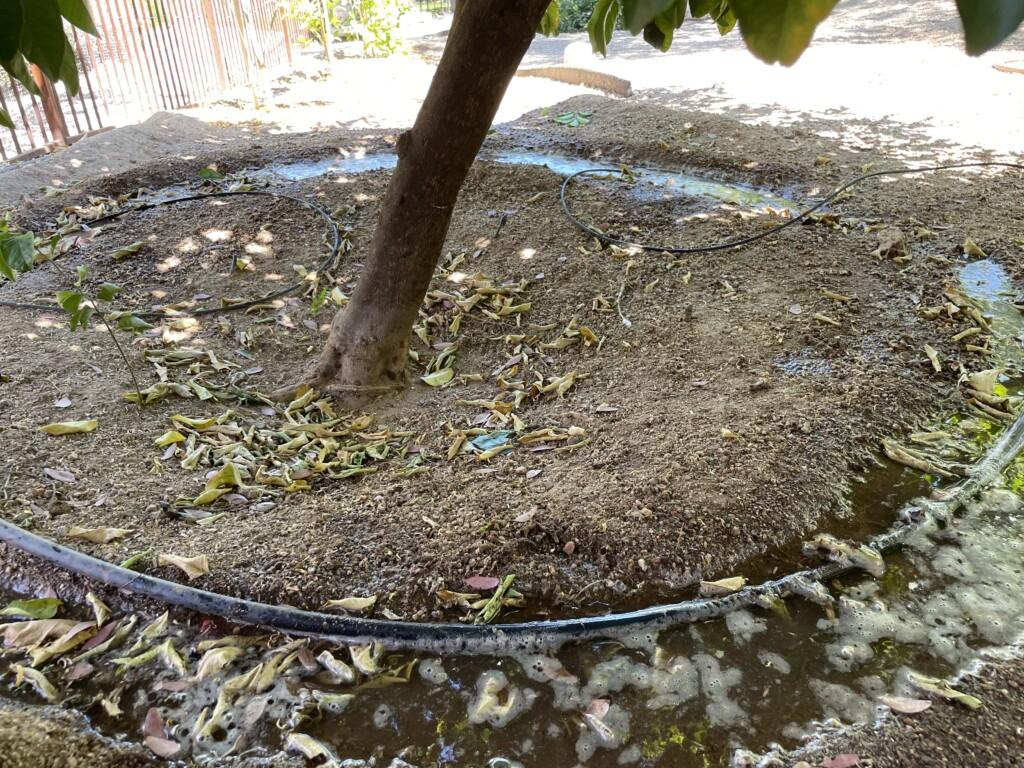What Is A Doughnut Basin?
A doughnut basin is a watering basin that encircles the entire tree. The doughnut basin fills up with water at the tree’s entire drip line and keeps water from nearing the trunk thereby avoiding the damage that occurs from excessive moisture on the tree’s trunk such as decreased foliage, dead limbs, and stunted growth. The purpose of any watering basin is to stop or slow the flow of water so that the soil has time to soak it in. If you have already established a “well” around your Mesquite or Palo Verde tree that you fill with water which comes into contact with the trunk of the tree then I recommend that you change this “well” into a doughnut basin. It is an easy transition.
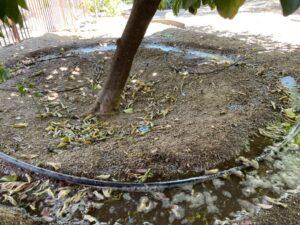
How To
Create two berms below the tree’s drip line or close to. One berm keeping the water from flowing away and the other to keep the water from nearing the tree’s trunk. This can be done with the tool of you choice such as a shovel or hoe. The doughnut well to the right fills with both water from the drip system and rain water from the roof. Note: If you have already created a “well” around your tree do not fill it with soil when transitioning to the doughnut basin. Keeping the root flare exposed is imperative to the health of the tree. You can learn more on this topic here.
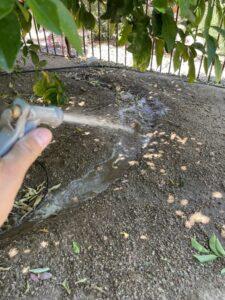
If you are of the nature that dirt moving is not your thing, you can easily create a doughnut basin with the pressure from your hose like in the photo to the left.
If your tree is on level ground then your new doughnut basin will fill up evenly with only a little finesse. However, if your tree is on a hill then you can make partial basins with each one having its own level. If you are making multiple basins maybe even for multiple trees then you can connect them. By placing the hose at the top end all of the basins receive water. The photo below shows three newly planted citrus trees all with partial basins that are connected. Notice how the water does not near the trunks. These basins also receive rainwater from the roof’s extended down spout.
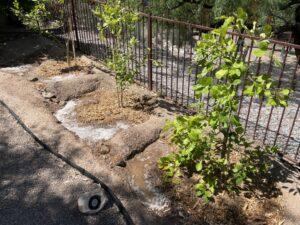
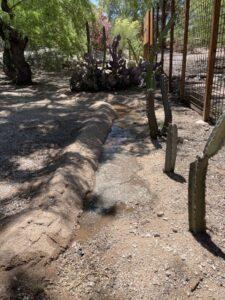
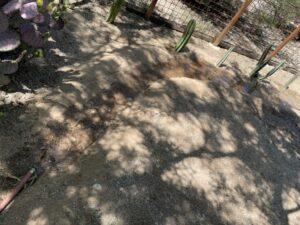
These newly planted blue myrtle cacti will receive rainwater when this basin fills.
The below photo is of a Desert Willow. A partial doughnut basin is on one side since there is a steep hill on the other side. Fresh wood chips were added to improve moisture retention.
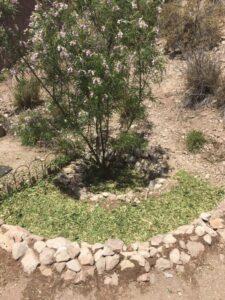
When constructing your own basins whether they be doughnuts or regular or a combination of both they can be as detailed and decorative as you like to match the surrounding landscape. Adding 3″ to 8″ rock on top of berms helps to resist erosion. Adding rock where multiple basins connect is also beneficial in slowing the water flow.
Angelo Romeo
ISA Certified Arborist WE-10202AT
May 8, 2023

